5. Portrait of a Lady on Fire
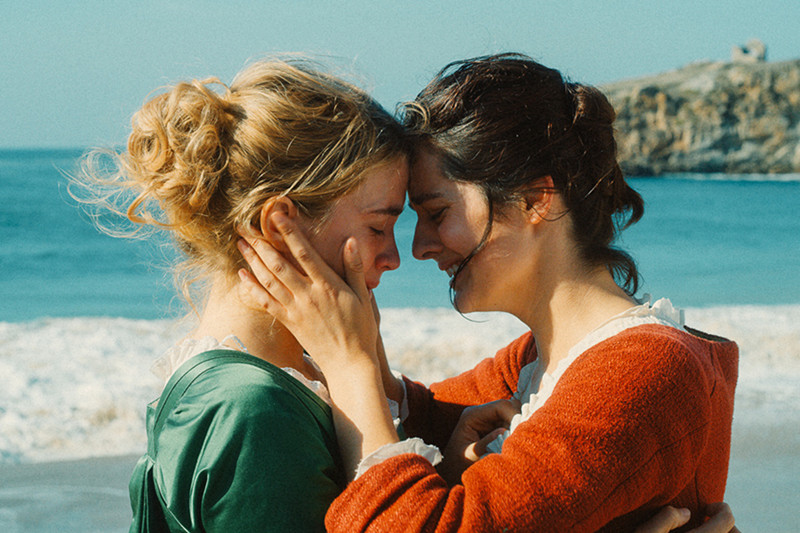
With her fourth film, Portrait of a Lady on Fire, Céline Sciamma sculpts an intimate and passionate costume drama. The scenes rumble with repressed feelings, shattering through into a cathartic, tearstained melodrama. Portrait of a Lady on Fire explores the relationship between art and love alongside rapture and pain. It’s a complete emotional feast and contains one of the most memorable uses of Vivaldi in cinema.
The film’s passion erupts through a series of increasingly sumptuous scenes. Portrait lingers on beautiful landscapes, finding joy in colour and artistry. Sciamma’s camera films nature with absolute wonder, hypnotized by the vibrant blue waves and the rough texture of the shores. Her warm, candlelit interiors are equally exquisite, drawing parallels to the lighting of Kubrick’s Barry Lyndon or the opulence of Visconti’s The Innocent.
Yet as ravishing as the film’s backdrops are, Sciamma’s storytelling unfolds primarily through the camera’s relationship to her two leads’ (Noémie Merlant and Adèle Haenel) faces. Portrait’s close-ups evoke past masters, like Carl Dreyer, whose tightly-framed shots emphasize the labyrinth of human expression. It’s a film deeply concerned with the process of looking at other people. Some, such as Laura Mulvey, would argue that this practice of looking has been the core of traditional filmmaking. Sciamma indulges in scopophilia, though veers away entirely from the male gaze, instead exploring a female one.
4. Hanagatami
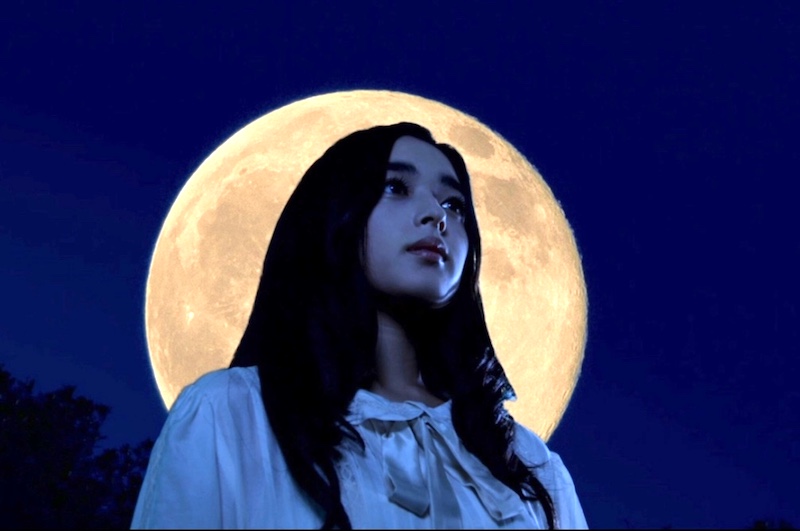
Nobuhiko Ōbayashi, who’s best known for the surrealist-horror cult classic Hausu, intended for Hanagatami to be his first feature over 40 years ago. However, Ōbayashi’s career was sidetracked by a prolific stretch of other features. Now, an old man diagnosed with cancer, he completed his passion project. Hanagatami follows the lives of Japanese teenagers leading into WWII. It’s operatic and epic, running over three hours, full of heartbreak and devastation. Yet Ōbayashi leans away from expected, somber aesthetics.
Instead, his film is an expressionistic delight, full of eye-popping colour. In the classic vein of Powell and Pressburger’s stunning yet thoroughly fake Himalayn backdrops in Black Narcissus, Ōbayashi embraces the artifice of filmmaking, finding beauty in green screen scenery. However, this disinterest in realism hardly negates the film’s emotional impact. Hanagatami overflows with passion and beauty in its countless vivid compositions.
The film is a love letter to cinematic wizardry. Though undeniably mature and thoroughly-conceived, Hanagatami is riffle with moments driven by a joy of experimentation with the art form. Ōbayashi feels like something of a Georges Méliès figure, fascinated by testing the possibilities for visual storytelling. Even in his old age, Ōbayashi’s filmmaking is evolving. Hanagatami feels like a crowning achievement, a perfect summation to a career devoted to crafting unforgettable images.
3. Transit
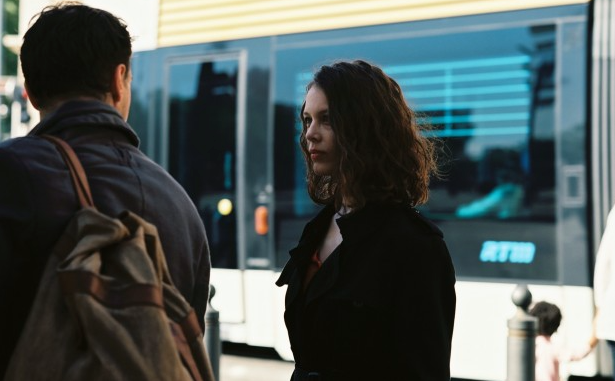
Transit, Christian Petzold’s follow-up to Phoenix, is deceptively simple. Its aesthetics scarcely depart from the norms of European arthouse dramas. However, Transit’s relationship with time defies any expected narrative structure. Centring around a migrant crisis in France, Petzold allows his story to simultaneously unfold in two distinct time periods.
Transit’s context and references stem directly from its source material, published in 1944. Yet the mise-en-scène is strictly contemporary. Transit is a specter, existing in defiance of linear narrative. It rejects the conventions of how art traditionally approaches the construction of temporal relationships, positioning time as something cyclical. The past and present converge, revealing little distinction between either.
This feeling of displaced time creates an off-kilter tension throughout the film’s runtime. An eerie atmosphere hangs over the movie’s depiction of Marseille. Petzold is a filmmaker with a superb understanding of how to create on-screen suspense, though much of it emerges more from the impending sense of dread rather than physical peril.
The central performance from Franz Rogowski, who’s something of a dead ringer for Joaquin Phoenix, is some of the year’s best acting. Though often subdued under waves of torment, Rogowski’s portrayal is never predictable. He exudes a command of the screen, with a captivating presence that draws attention to the slightest nuances in his performance. The collision of Petzold’s innovative storytelling and Rogowski’s physicality make for a sad and spellbinding drama.
2. High Life
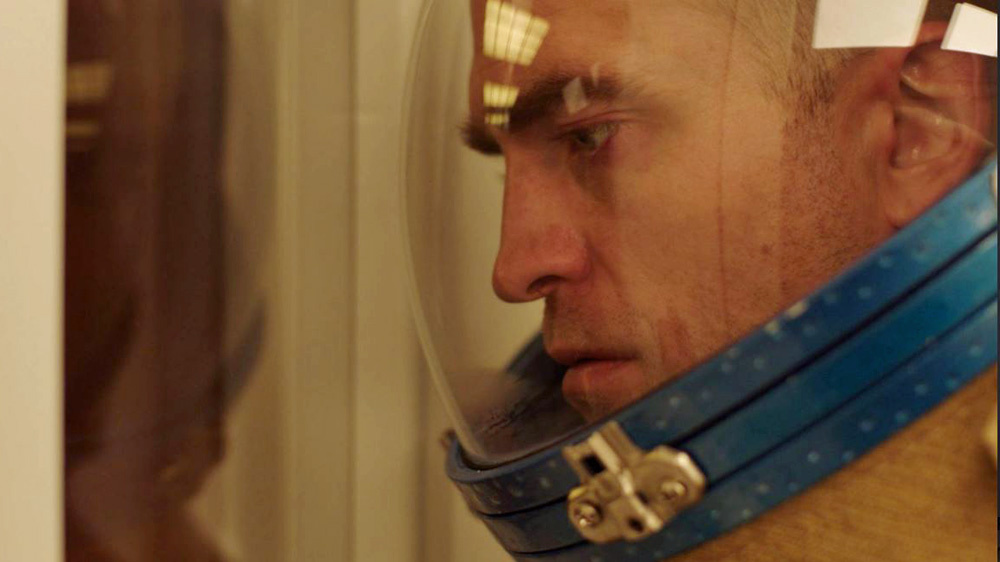
Claire Denis’ High Life, her most ambitious movie to date, is another triumph from the master filmmaker. As per usual with Denis, it’s equally hypnotic and confounding. Spearheaded by a haunting performance from Robert Pattinson, High Life follows several prisoners on a spaceship researching black holes. Harrowingly, Denis chronicles a system where prisoners’ bodies fall under the complete jurisdiction of the maniacal, fluid-obsessed Dr. Dibs (Juliette Binoche).
High Life’s non-linear narrative unfolds through physical violations. As is the case with Trouble Every Day or Bastards, Denis’ resistance to straightforward exposition leads to storytelling through unforgettable and evocative images. High Life boasts a knack for surreal visuals, tiptoeing on the line between the horrifying and beautiful. It’s difficult to shake the image of the astronauts’ lifeless bodies floating in the vast emptiness of space. Even more mesmerizing is the terrifying scene where Dr. Dibs rides The Fux Box, Stuart A. Staples’ score shrieking as her body contorts in a pitch-black abyss.
This hybrid of arthouse and genre filmmaking twists into pure nightmare-fuel. Yet Denis is never a one-note filmmaker. Amidst High Life’s nihilism are streaks of violence and empathy. Her film is brutal but hardly misanthropic. There is warmth amongst the cruelty, giving High Life its mesmerizing complexity.
1. Long Day’s Journey Into Night
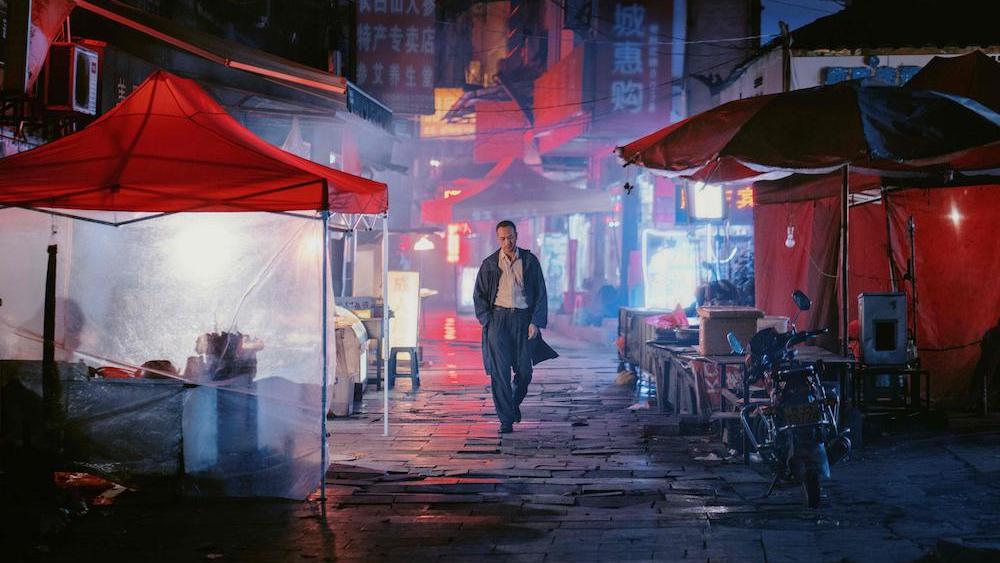
Long Day’s Journey Into Night, Bi Gan’s sophomore feature, was received primarily as a staggering technical feat. After the first seventy-five minutes, the film transitions into a 3D, hour-long tracking shot. The camera’s movements are immaculately mapped out, offering an irresistible cinematic dance. However, in an era pervaded with long-take movies, from Russian Ark to 1917, the technique no longer feels innovative. Instead, it’s begun to resonate more as a formal gimmick.
Fortunately, Long Day’s Journey Into Night is infinitely more complex than its flashy surface. The film is a retreat into the annals of one man’s memory as he recalls a past love. Gan fuses the modernist aesthetics of film-noir with the melancholic energy of Andrei Tarkovsky. Pulp iconography and arthouse storytelling converge into a film evocative of Yoshitaro Nomura. At the core of this ethereal detective story is a sense of overwhelming isolation, each shot painted with delicate intimacy.
Bi Gan constructs a world out of rain-soaked streets and gentle splashes of vibrant colour. The film’s universe, as if plucked directly from a dream, is a transfixing landscape. As impressive as Gan’s impressive camerawork feels, it’s ultimately the overwhelming ambiance that makes Long Day’s Journey Into Night unforgettable.